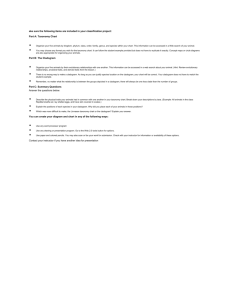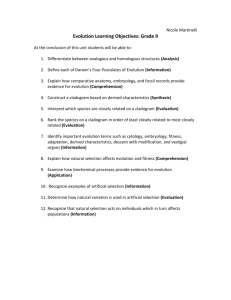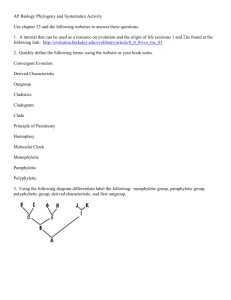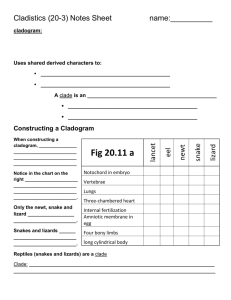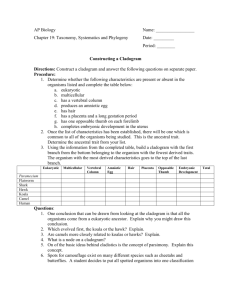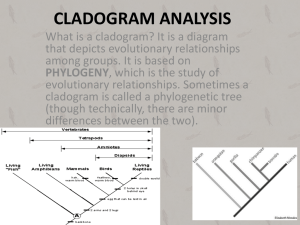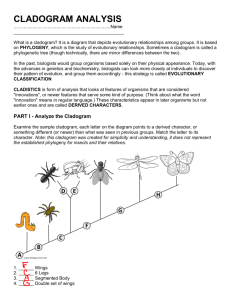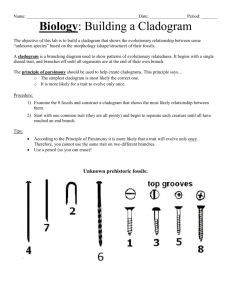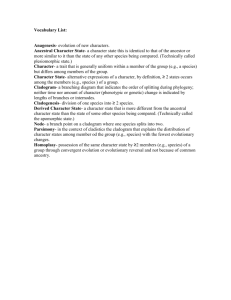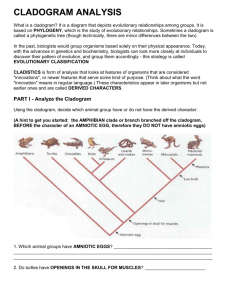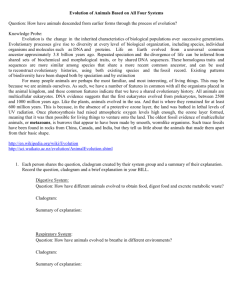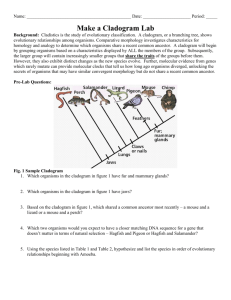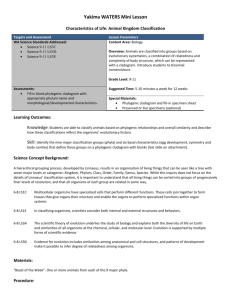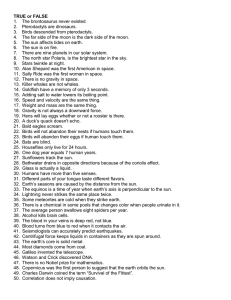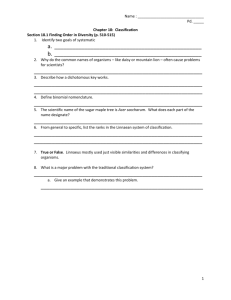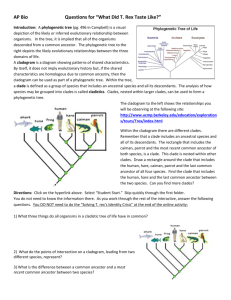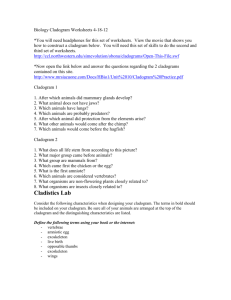Cladogram Activity
advertisement
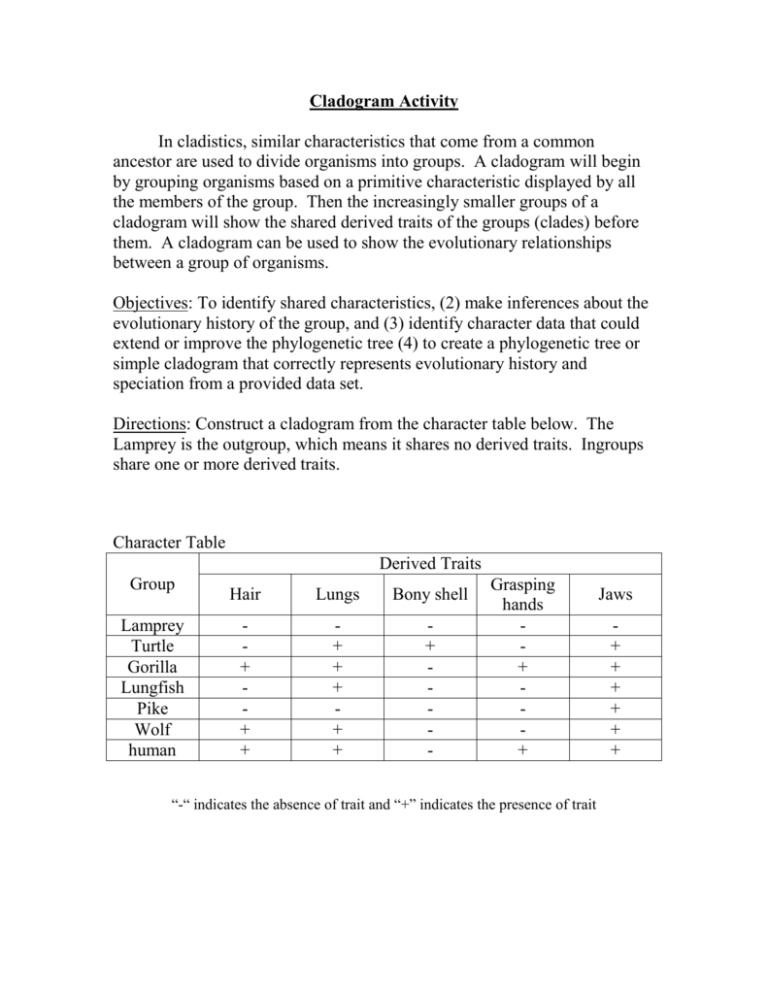
Cladogram Activity In cladistics, similar characteristics that come from a common ancestor are used to divide organisms into groups. A cladogram will begin by grouping organisms based on a primitive characteristic displayed by all the members of the group. Then the increasingly smaller groups of a cladogram will show the shared derived traits of the groups (clades) before them. A cladogram can be used to show the evolutionary relationships between a group of organisms. Objectives: To identify shared characteristics, (2) make inferences about the evolutionary history of the group, and (3) identify character data that could extend or improve the phylogenetic tree (4) to create a phylogenetic tree or simple cladogram that correctly represents evolutionary history and speciation from a provided data set. Directions: Construct a cladogram from the character table below. The Lamprey is the outgroup, which means it shares no derived traits. Ingroups share one or more derived traits. Character Table Derived Traits Group Lamprey Turtle Gorilla Lungfish Pike Wolf human Hair Lungs Bony shell + + + + + + + + + - Grasping hands + + “-“ indicates the absence of trait and “+” indicates the presence of trait Jaws + + + + + + Cladogram drawing: Questions: a) Which two species are the most closely related? b) Are pike more closely related to lungfish or to gorillas? c) Which of the derived traits came into existence before the bony shell? d) List all the derived characters in the table that would have been present in the ancestor to gorillas, wolves and humans.
